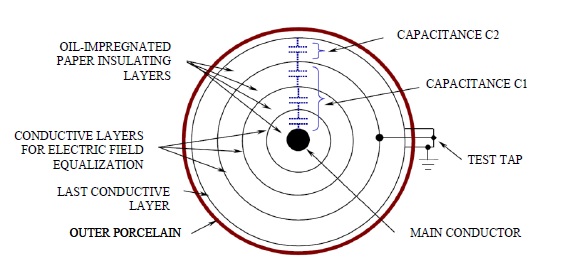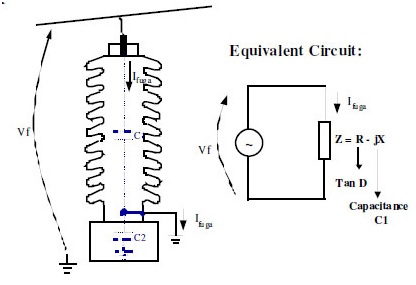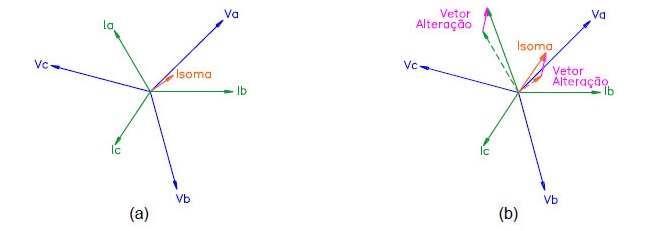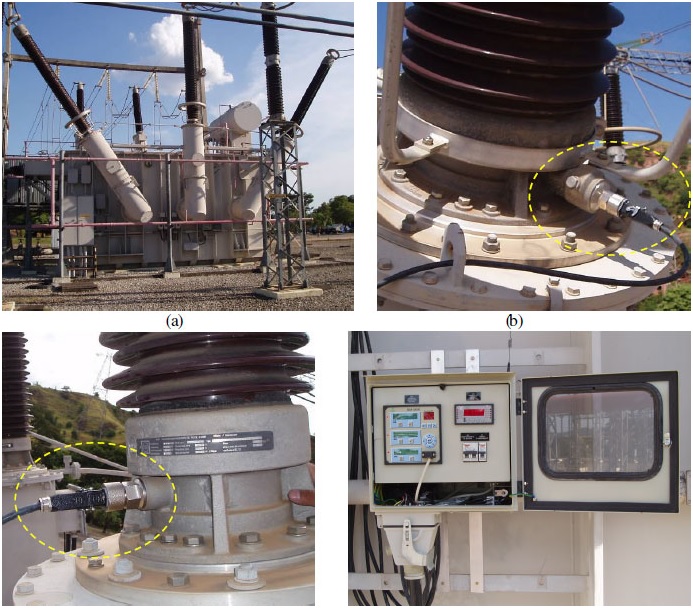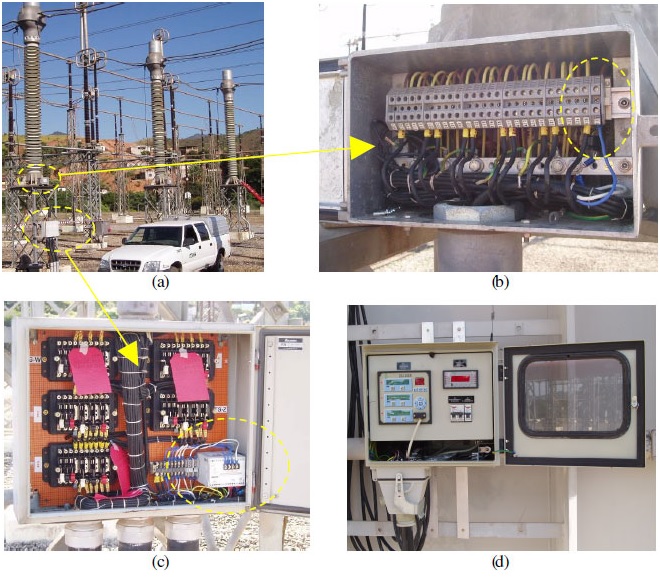On-line Capacitance and Tangent Delta Monitoring
On-line Capacitance and Tangent Delta Monitoring for Condensive Bushings
- 30/01/2015
- Transmission
Abstract
In general, even though the unit cost for bushings is relatively low if compared to the total cost of the equipment where it is applied, a bushing insulation failure can result in severe damage for the equipment, such as for instance, a power transformer or a current transformer, and may even lead to its total loss.
Capacitance and tangent delta are recognized as some of the main diagnostic parameters for bushing insulation condition, since these two parameters are directly impacted by the degradation of the insulation. For example, layers of insulation in short circuit cause capacitance to rise, while entrance of moisture because of sealing failure cause tangent delta to increase.
This article will introduce an online monitoring philosophy for capacitance and tangent delta for bushings and current transformers, dealing with the philosophy and basic principles used, including the following topics:
– Direct measurement of leakage currents on bushing test or voltage taps;
– Mathematical treatment and statistical of readings to extract information about capacitance and tangent delta of the insulation;
– Monitoring sensibility and technical accuracy;
– Alarms for absolute capacitance and tangent delta values;
– Alarms for capacitance and tangent delta evolution trends;
– Protections against overvoltage and overcurrents caused by transitory phenomenon in the grid (for example, maneuver surges and atmospheric discharges) and against accidental opening of the tap in the bushing.
The experiece obtained through using this system on the field, monitoring simultaneoulsy 3 500kV bushings and 3 230kV bushings on a power transformer and 3 500 kV line current transformers. This allowed the monitoring system’s stability to be checked as well as its immunity to regular variations in the power system, in addition to their operation under maneuver surge and other disturbing coinditons.
| Cemig S. A. | Jorge C. da Silva |
| Treetech Sistemas Digitais Ltda. | Marcos E. G. Alves |
1.0 – INTRODUCTION
Bushings are accessories applied on high voltage equipment for the purpose of providing a passage path for electrical current between the outside to the inside of the equipment, as well as providing the necessary insulation in relation to the casing of the equipment. A few examples of the most common forms of application are power transformers, shunt reactors and high voltage circuit breakers.
In spite of being an accessory applied on the different equipment types mentioned, and in general with unit cost being relatively low as compared to the overall cost for the device, bushings perform a function that is essential in operating the equipment.
On the other hand, bushings are subjected to considerable dielectric stresses, and a failure in their insulation can lead to damages not just to the bushing, but also to the equipment to which it is associated. In extreme cases, a dielectric failure in a bushing may lead to total loss or destruction of the high voltage equipment (in the case of power transformers, for instance, losses in events of this type can have costs hundreds of times higher than the cost of the bushing that caused the problem).
Among the different types of existing bushings, the condensive type stand out in applications on high and extra-high voltage equipment. These are bushings where the insulating body consists of several concentric, cylindrial layers of insulating material, interspersed with conductive layers whise fuction is to achieve maximum electrical field uniformity. The innermost conductive layer can be electrically connected to the main lead, in irder to increase the radius and reduce the lectrical field in this region (as well as reducing the intense electrical fields that can be caused by the presence of wrinkles on the main lead). The outermost conductive layer is connected to the flange of the bushing and, in its turn, the flange is graounded. The intermediate conductive layers remain insulated, with floating potential. For outdoor applications, the entire set is protected inside a waterproof container, frequently manufactured in porcelain. The connection of the last conductive layer (or one of the last ones) to ground is usually done via a removable connection placed close to the base of the bushing, called the voltage tap or test tap (figure 1).
The above described set behaves electrically as several capaciotors connected in series, creating a capacitive voltage splitter. In this way, the total potential diference of the main lead in relation to graound is split equally among the diferent capacitors.
Figure 1 – Constructive details of condensive bushings
When the operating voltage is applied on a condensive bushing, a current, called the leakage current, starts circulating through insulation, in particular due to its capacitance, and in much smaller scale due to its dielectric losses (expressed by the dissipation or tanget delta factor). Figure 2 ilustrates this situation; in this figure, we can observe the electrical equivalent obtained through the construct shown in figure 1, with the bushing already energized.
This is the electrical equivalent “series” model. A “parallel” model could also be applied, with the same results. With the model we have adopted, the following leakage current is obtained:
With “R” representing the resistive component of the impedance of the insulation, which generates the resistive portion of the leakage current, associated to the dielectric losses, with “X” being the reactive component due to the capacitance of the insulation.
Figure 2 – Equivalent circuit for an energized condensive bushing
The objective of online monitoring for condensive bushings is the detection of changes in the insulation bushing while they are still in the initial stages, pointing to the possible development of conditions likely to lead to a dielectric failure in the equipment. To this end, we must detect, with the bushing energized, any changes occurring in the insulation’s capacitance and tangent delta, i.e., changes in the bushing insulation’s impedance “Z”.
2.0 – OPERATING PRINCIPLE
In each of the bushings, the Ileak leakage current flows to ground through capacitance C1, passing through the test tap, with this current being a function of the phase-ground voltage and the impedance of the insulation. In this way, any change in the impedance of the insulation (capacitance or dissipation factor) will be reflected by corresponding changes in the leakage current that, in theory, could be used to detect the changes that took place in the impedance.
However, one of the obstacles found in detection using the method described above is the order of magnitude of the changes being monitored. Changes as small as an algebraic increment of 0.3% in the dissipation factor of a bushing may represent the difference between a new bushing, in good conditions, and one that is on the limit of acceptable. It is evident that changes so small in the dissipation factor will lead to practically insignificant changes in the bushing’s leakage current, making detection exclusively through monitoring of each bushing’s leakage current unviable.
One of the techniques that allows the practical constraint described above to be overcome is using the vectorial sum of the leakage currents for the three bushings in a three-phase application system. In a set up of this type, the three leakage currents have an approximate phase difference of 120º, and usually, are of the same order of magnitude, since the three bushing in principle have similar capacitances and voltages for the three phases are close to balanced. In this way, the sum of the three leakage currents tends to a figure quite a bit smaller than each of the leakage currents taken individually, as shown in figure 3.(a) for a given initial condition of capacitances and dissipation factors.
Figure 3 – Leakage currents in three bushings of a three-phase system and their sum; (a) For a given initial condition; (b) With changes in the capacitance and dissipation factor of the bushing in phase A
Let us now suppose there hás been a change in the capacitance and the dissipation factor of the bushing in phase A, as shown in figure 3.(b), the Change Vector DI that expresses the displacament of current Ia from its initial value to the new final value, is also reflected in the sum current, which is displaced from its initial value by the same Change Vector DI.
This Change Vector hás practically insignificant weight as compared to the magnitude of the leakage current for phase A. However, the same is not true when comparing this vector to the sum current, which allows it to be detected and, consequintly, detection of the change occurred in the impedance of the bushing in case of point.
By the above exposed, a few intrinsic characteristics of the method can be observed:
- An initial current reference system must be created for the system, so that this can then be compared to the new on-line readings, in order to determine changes occurring in bushing capacitance and dissipation factor;
- The absolute values of the capacitance and tangent delta of the bushings are not measured, but rather any variations occurring in these parameters. However, once the initial capacitance and tangent delta values for each bushing is known (values found when determining the initial reference currents), measuring the variations occurred allows the current values for capacitance and tangent delta to be ascertained;
- In the case of new bushings, the values informed by the manufacturer on the equipment’s data plate can be used as reference values for capacitance and tangent. However, for bushings already in operation it is advisable that, when installing the online monitoring system, these parameters be defined using conventional methods, with bushings de-energized. This ensures that the correct intial reference values are used by the monitoring system.
Another issue that has not been approached up to here is that leakage currents and sum current are not only influenced by changes in the capacitance and tangent delta of the bushings, but also by changes in the phase-ground voltage of each bushing. This influence is eliminated by way of mathematical and statistical treatments performed on the readings, and is also the reason why the process for determining the initial reference currents is performed over a 10-day period after the bushing monitoring system has been placed in operation. On the other hand, the process of measuring changes occurred, for the same reasons, has a response time constant of approximately 10 days.
As exposed in the above introduction, the physical construct of bushings creates a capacitive voltage splitter, with the lower half of this splitter usually being short–circuited by grounding the tap of the bushing, so that the voltage of the bushing in relation to ground is zero volts. In order to measure the bushin leakage current, this direct grounding is removed and substituted by the leakage current measurement system. Due to this circuit’s low impedance, the tap’s voltage in relation to ground remains close to zero. Nonetheless, it should be observed that in the case of accidental interruption of the measurement circuit, the capacitive voltage splitter will generate a voltage on the bushing tap that usually exceeds the tap’s dielectric rigidity in relation to ground, with a risk of damaging the bushing.
In order to prevent this from occuring, the bushing tap connection adapter is provided with a voltage limiter device that conduces current if the measurement circuit is breached, consisting in a low impedance escapa path for the leakage current, so that the voltage of the tap in relation to ground remains at a few volts. This limiter device is not liable to wear of either mechanical or electrical nature, ths creating conditions for the leakage current to flow through it for indeterminate time period.
3.0 – FIELD EXPERIENCE
Figure 4 illustrates the deployment of bushing monitoring on a three-phase 500/230kV transformer at CEMIG’s Mesquita Substation. This figure shows the typical topology used in bushing monitoring systems, comprised of three basic parts:
- Tap adaptaders – provide the electrical connection for bushing taps, also ensuring they are weatherproofed. They feature protection against accidental opening of the circuit, thus avoiding the tap remaining open;
- Measuring Module – receieves leakage current readings from the three bushings in a three –phase set, performs measurement for these currents and their mathematical and statistical processing, displaying through the interface module, the current values for capacitance and tangent delta connected through a serial communication port;
- Interface Module – receieves information form measurement module(s) and makes them available locally through the device’s own display or remotely through alarm signal output contacts, analog outputs (mA) or serial communication ports. Optionally, the Interface Module can also be connected to the company Intranet for remote access to readings.
This system started operating monitoring capacitance and tangent delta of 500kV and 230kV bushings of power transformers. The charts of figure 5 show thetypical behavior of these variables in a 5-month period. During this period, the readings taken by the monitoring system show the values remaining fairly stable, with variations under 0.1% for capacitances and 0.05% (in absolute variation) for tangent delta readings.
Figure 4 – Bushing monitoring in a three-phase transformer; (a) Transformer; (b) Tap adapter on 500kV bushing; (c) Tap adapter on 230kV bushing; (d) Panel with Measurement and Interface Modules
Figure 5 – Typical fluctuations in Capacitance and Tangent Delta values
These results, in addition to showing that the insulation of the bushings did not vary in the period, also show the stability of the technique employed in online monitoring and its immunity to the interference of transitory phenomenon occurring on the voltages of power systems. These phenomenon can include maneuver surges, oscillations in phase-ground voltages and unbalance between phases, as can be seen indirectly in the chart of figure 6, showing here typical readings for leakage currents in bushing taps for the same period. Since there were no variations in the capacitance and tangent delta of the bushings, all the variations seen in these leakage currents are caused by normal fluctuations of the electrical system’s voltage, which, however, did not cause undue variations in the readings for capacitance and tangent delta.
Figure 6 – Typical values for Leakage Current readings
Figure 7 – Monitoring of Current Transformers; (a) single-phase 500kV CTs; (b) Secondary box with shielding grounding available; (c) Common panel with Measurement Module; (d) Interface Module on power transformer
Later, in February/2006, the bushing monitoring system received an expansion in order to monitor capacitance and tangent delta for a set of 3 500kV single-phase Current Transformers. This was possible because the shielding grounding for these CTs was available in the secondary connection box, as shown in figure 7, allowing a new Measurement Module from the bushing monitoring system to be connected. This Measurement Module was installed on the CTs common panel, performing measurement for leakage currents and their sum for the three CTs, and was linked to the existing Interface Module on the power transformer, which then started to monitor the insulation (capacitance and tangent delta) for both, bushings and CTs.
4.0 – CONCLUSION
High voltage condensive bushings are an essential accessory in safe operation of different high voltage equipment, such as power transformers and circuit breakers. This article demonstrated the operating principle that allows online monitoring of this type of bushing, as well as the deployment of this system to bushings on 500/230kV three-phase transformers and on three single-phase 500kV current transformers.
The operation of this system for a few months attested to the system’s stability and immunity of transitory phenomenon and fluctuations of electric power systems, which did not cause undue variations in the capacitance and tangent delta readings.
During the period under study, fluctuations observed in readings were under 0.1% for capacitance and 0.05% (in absolute value) for tangent delta, creating feasibility for very sensitive adjustments on first level alarms by rises in these variables, so that in case of defect on the insulation, alerts would be issued while these are still in their initial stages, but without the risk of false alarms.


